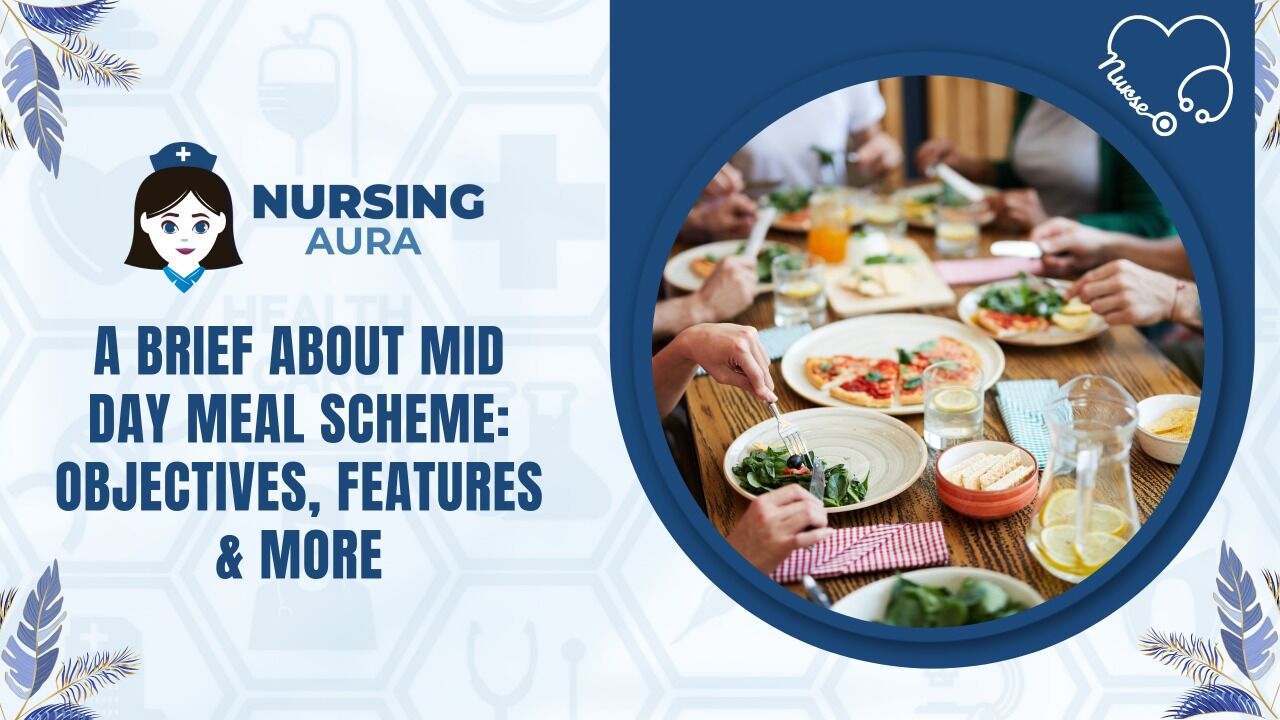The Mid-Day Meal Scheme began on 15 August 1995 in India under the name “Public Program of Nutritional Support to Primary Education (NP-NSPE)”. In October 2007, it was renamed the Public Program of Mid-Day Meals in Schools, also known as the Mid-Day Meal (MDM) Scheme.
Under the MDM plan, all students enrolled in government schools, nearby municipal schools, government-aided schools, special training centers (STC), maktabs, and madrassas supported by the Sarva Shiksha Abhiyan receive one meal, typically lunch. From the ages of six to fourteen, each selected and achieving school-aged child receives prepared meals. Children in Classes 1 through 8 are provided with meals.
The Objectives of the Mid-Day Meal Programme are:
- To increase the enrollment in schools of children living in and belonging to a poor and backward segment of society.
- To increase student attendance in government and government-supported schools.
- To encourage students in grades one through eight to complete their secondary education.
- To provide dietary assistance to elementary-aged children, particularly in communities plagued by drought or prone to natural calamities.
- To combat poverty, malnutrition, and the lack of proper sustenance, as well as to further enhance socialisation among various castes and groups.
The Features Of Mid-Day Meal Scheme
The Mid-day Meal includes the following elements:
- Each institution should have a structure for preparing healthful, freshly-prepared early afternoon meals.
- The midday meals are to be served only on school grounds on all school working days.
- Due to the depletion of the midday meal fund, the headmaster/headmistress/principal is authorised to use school funds.
- When the school is credited with something similar, the money will be reimbursed with something similar.
- For the preparation of school lunches, AGMARK-certified quality products are procured.
- Several adults sample the lunch served by the school board panel.
The Food and Drug Administration Department of the State can conduct tests to ensure the quality and nutritional value of food.
The State Steering-cum Monitoring Committee (SSMC) will oversee the implementation of this plan, including the establishment of a mechanism to maintain the quality and nutritional standards of the food.
When the prepared meals cannot be served to the children due to unforeseen circumstances, they are compensated with food in the following way:
- Amount of food grains according on a student’s qualifications, and
- Cooking expenses prevalent in a given state.
- Meals Provided Through The Mid-Day Meal Program
This plan provides the following amount of meals per student each school day:
| Food items | Primary grade (Class I-V) | Upper level (Class VI-VIII) |
| Food Grains | 100 gms | 150 gms |
| Pulses | 20 gms | 30 gms |
| Vegetables (green leafy too) | 50 gms | 75 gms |
| fat and oil | 5 gms | 7.5 gms |
| Spices and seasonings | As per need | As per need |
The daily admission price per student is as follows:
| Calories Intake | Primary | Upper Primary |
| Energy | 450 calories | 700 calories |
| Protein | 12 grams | 20 grams |
A grant for the transportation of food grains is provided to eleven special classification states at the Public Distribution System rate prevailing in these states, and up to a maximum of Rs.75 per quintal for all other states/UTs.

